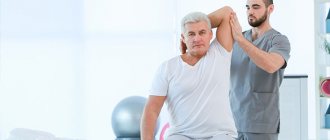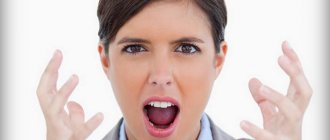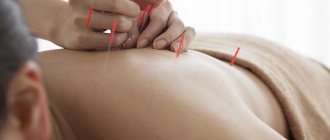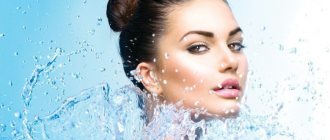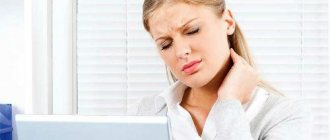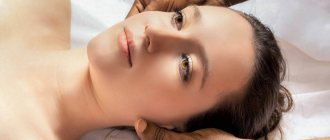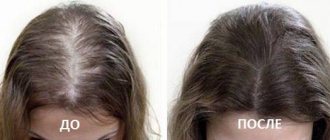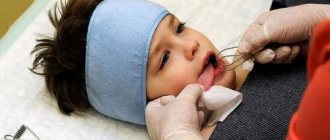The cervical-collar zone includes the upper spine, muscles of the neck and shoulder girdle. This area is constantly exposed to static loads. An inactive lifestyle contributes to swelling, pinching, and congestion, which provokes circulatory failure in the brain and causes oxygen deficiency.
As a result, such negative factors in this area lead not only to muscle pain, but also to headaches, as well as other unpleasant phenomena:
- dizziness,
- ailments,
- deterioration of coordination,
- nausea,
- floaters before eyes,
- visual and speech impairment,
- increased fatigue and decreased mood.
A simple massage of this area can relieve discomfort associated with tension in the cervical-collar area. Moreover, sometimes, to get rid of discomfort, it is enough to perform self-massage.
However, pain in the cervical-collar area can be associated with pathological processes, for example, various diseases of the spine or blood vessels.
Before performing a massage, you should consult a doctor; perhaps he will prescribe a therapeutic massage option.
The effect of massage of the cervical-collar area
Massage of the cervical-collar area as a whole has a healing effect on the body, increases vitality and has many other positive effects.
Massage normalizes blood circulation, improves metabolic processes, and removes congestion.
With its help, you can quickly relieve accumulated fatigue and tension in the muscles of the shoulder girdle and neck, increase their elasticity and normalize tone. The massage effect is noted to be an increase in efficiency, the return of full sleep, and it is also an excellent prevention of many diseases of the musculoskeletal system.
However, despite the simple technique of performing massage of the cervical-collar area, the positive effect of the impact directly depends on the accuracy and professionalism of the massage therapist. Therefore, when performing self-massage, you should be very careful and if you experience the slightest discomfort, you should stop working on this area yourself and consult a doctor.
The therapeutic option of massage is prescribed not only to adults, but also to children. Thanks to massage, the child’s attention and memory improves, muscles relax and excess stress is removed from the growing body.
Also, the effects of massage of the cervical-collar area include the following factors:
- stimulation of muscle work in the cervical-collar area;
- posture correction;
- normalization of breathing and blood microcirculation;
- elimination of congestion in this area of the body;
- eliminating pain from lactic acid after sports training;
- general relaxing effect;
- improving the functioning of internal organs.
In general, after a massage, there is an increase in a person’s overall ability to work, since reflexogenic points are located in the cervical-collar area.
Vision also improves in the same way, since the nerve endings associated with the organs of vision are located in the cervical region.
Massage of the cervical-collar area, according to indications, can be performed using mechanical and electromechanical devices
In addition, the cosmetic benefits of the procedure are important for women. As a result of targeted impact on the skin, its elasticity increases and the thickness of the fat layer decreases. Most often, massage is done manually; it can be performed at home. To do this, you only need a flat, soft surface, a sofa or bed.
The effect of massage on sleep quality.
When people have trouble falling asleep, they usually do one of two things.
They will either suffer through the night, watching the clock tick, becoming increasingly tense as the night wears on, or they will take sleeping pills.
But what if there was a better (and more enjoyable) way to fall asleep effortlessly?
Massage therapy has been shown to be better for sleep because it helps people relax, relieves pain, and can also stimulate hormones that promote sleep.
Why does massage help improve sleep?
There are a few different reasons why massage can have such a positive effect when it comes to sleep. Some of them are obvious to those who get massage regularly. For example, massage is a fantastic way to reduce stress levels, which can be a major cause of anxiety or insomnia.
This means that any practice that helps reduce anxiety can, in turn, more than likely help with sleep.
However, this is not the only benefit. Massage can also help relieve pain. And it doesn't really matter what type of massage you choose, the basic rule is that less pain means more comfort, which means less disruption to a good night's rest.
Even apart from the above-mentioned reasons, numerous studies have shown that massage can be a direct solution to combat insomnia. This means that even if the root cause of your sleep deprivation problems comes from actual sleep disruption, there's a chance that massage can at least help resolve the issue, if not be a direct solution.
Many believe that it is the massive release of the happy hormone serotonin into the body during massage that helps combat or extinguish many of the common stress or pain chemicals found in the body. By being able to suppress these negative chemicals within you, massage clears the way for not only improved overall well-being but also improved sleep.
Of course, massage is not the best way to combat insomnia, but it is definitely worth practicing. Most likely, it will not bring a complete cure, but it will work well in combination with other remedies against insomnia and will alleviate a number of unpleasant symptoms.
To increase the effect of the massage, you can add essential oils.
While many of the benefits of massage are obvious on their own, there is little doubt that the proper addition of some aromatherapy or even essential oils can help enhance certain positive benefits that a massage treatment brings.
The right essential oil can help you relax, enhance the massage experience, and even help relieve stress and relax. For example, lavender is an incredibly popular choice for many professionals, but you can choose another oil with a similar effect if there is a certain aroma that helps you relax and relieve stress.
In conclusion, if you are having trouble falling asleep, the best therapy may be a visit to your nearest spa. This is a much more enjoyable form of sleep prevention than some other popular forms of treatment, such as sleeping pills, and is also more beneficial for the overall health of the body.
Indications for massage of the cervical-collar area
Massage is indicated for the following diseases and conditions of the body:
- fatigue, tension after a working day, stress, insomnia;
- spasm and tension in the muscles of the neck and back (trapezius, deltoid);
- long-term static load on the cervical spine, physical load on the shoulder and neck area;
- headache, dizziness;
- prevention of neuralgic diseases of the hypo- or hypersthenic type;
- plexitis and neuritis - inflammatory pathologies of the nerves;
- slight increase in blood pressure;
- diseases of the cervical spine - osteochondrosis, chondrosis, arthrosis, scoliosis and others;
- rehabilitation after injuries, bruises and fractures, strokes and heart attacks (as prescribed by a doctor);
- poor posture, deformation of the spinal column;
- diseases of the gastrointestinal tract (gastritis, colitis);
- some diseases of the respiratory system (emphysema, bronchial asthma).
Separately, it should be noted that daily self-massage in the cervical-collar area is very useful for those who experience high visual stress. Massage can be carried out in a course for both therapeutic and preventive purposes.
In general, massage of the cervical-collar area is recommended for all people, since this area is exposed to stress every day.
Contraindications to massage of the cervical-collar area
Despite the great benefits of massage, there are conditions in which it is contraindicated. Therefore, before such a procedure, it is necessary to consult a doctor.
Contraindications to massage of the cervical-collar area:
- tumors, severe inflammatory processes or wounds in the neck - fractures, ruptures, bruises;
- infectious diseases in the acute stage, high fever;
- high blood pressure;
- decompensated atherosclerosis;
- respiratory and heart failure;
- decompensation of liver and kidney function;
- instability in the cervical segment of the spine;
- unhealed fracture or unhealed neck injury;
- the presence of herniated intervertebral discs in this segment;
- thrombosis and blood pathologies with dysfunction of the hemostasis system (hemophilia);
- osteomyelitis, bone tuberculosis;
- skin diseases in this area, chronic dermatoses.
Massage of the cervical-collar area of a pregnant woman can only be carried out according to a doctor’s indications. Before the session, the massage therapist should be warned about your pregnancy.
How is massage of the cervical-collar area performed?
There are a variety of massage techniques for the cervical-collar area. The differences depend on the specialist who performs it, as well as on the purpose of the procedure. Sometimes it is combined with cupping and is carried out with an additional vacuum effect. Classic massage of this area involves several muscles: trapezius, deltoid, vertebral, as well as the shoulder girdle area, shoulder joint and cervicocranial joint.
Before the massage session, the patient is positioned correctly.
You can place the patient on a couch or sit on a chair, but in a sitting position, you need to find support for the head - the forehead should rest on a pillow on the table or on folded palms.
Massage technique step by step
A step-by-step algorithm for manual massage of the cervical-collar area consists of alternating several techniques in a certain sequence: stroking, rubbing, kneading, rubbing again, vibration and finally stroking again.
- The beginning and end of the entire procedure - stroking - is performed with two palms from top to bottom of the neck. The hands are held so that the thumbs are located on the cervical vertebrae.
- A technique such as rubbing is aimed at warming up the muscles and joints, improving metabolism and blood supply in the cervical-collar area. Rubbing is almost always done with two hands and sometimes with the pads of the fingers.
- The main and most effective massage technique is kneading. It is carried out with one or two palms. The intensity of exposure should be increased gradually, avoiding discomfort and pain. Kneading takes up about 60% of the session time.
- When vibrating, movements are rhythmic, intermittent or constant, performed with fists or palms, pain is also not allowed.
Apart from the last vibration effect, you can do all the other techniques yourself.
The entire procedure for a good massage usually lasts about 20 minutes. Some parts of the cervical-collar area may be a little more sensitive, so the patient always needs to inform the master about his sensations and well-being so that he can increase the intensity and load during the session correctly and in the right place.
After completing the massage, you should not make sudden movements for several minutes; you need to lie down calmly and relaxed and avoid cooling the treated cervical-collar area.
Self-massage before bed
Self-massage before bed - its task is to relieve tension, calm the body, preparing it for sleep.
The massage is carried out easily, without tension, rhythmically. The following techniques are used: stroking, shaking, rubbing, light kneading and stroking again. The last technique is best done in bed with complete relaxation on the chest, stomach, face (mainly on the forehead). Self-massage before bed is especially useful for mental workers, as well as those working in production with high noise levels. This self-massage session takes no more than 5-8 minutes.
In recent years, many people have been doing physical exercise 1-1.5 hours before bedtime: gymnastics, running, etc. After this, they take a cold shower. This is not entirely correct. Cold water, as a rule, excites the nervous system and can worsen the process of falling asleep (make it take longer and make sleep more restless). Therefore, it is best to take a shower and wash your face with warm water before going to bed. Take a cold shower at least two hours before bedtime.
Here I would like to talk about acupressure. It is advisable to carry it out in bed immediately before bedtime. Massage asymmetrical points with the fingers of your right hand, and symmetrical points with the fingers of your right and left hands in turn.
It is better if acupressure is given to you by one of your family members. But self-massage is also quite effective.
Massage the points in the following sequence (Fig. 78):
- 1st point (asymmetrical) between the eyebrows. Massage with your index finger, press lightly, intermittently for three minutes.
- 2nd point (symmetrical) on the hand at the end of the fold formed when the arm is bent at the elbow, on the side of the thumb. Massage with your thumb, press sensitively, intermittently for 5 minutes.
- 3rd point (symmetrical) on the back of the hand, between the thumb and forefinger (if you spread your fingers, then one centimeter from the skin fold in the center). Massage with your thumb, press lightly, intermittently for 3 minutes.
- 4th point (symmetrical) on the foot under the inner ankle, on the border of the dorsal and plantar surfaces. Massage with your thumb, press lightly, making rotational movements, for 3 minutes.
- 5th point (symmetrical) in the center of the sole, between the second and third metatarsal bones. Massage with your index finger, kneading strongly, i.e. intermittently pressing on the point and the area around it, for 3 minutes.
- 6th point (symmetrical) under the outer malleolus, at the level of the protrusion of the heel bone. Massage with your thumb, press sensitively, making rotational movements, for 3 minutes.
- 7th point (symmetrical) between the first metatarsal bone and the main phalanx of the big toe, on the border of the dorsal and plantar surfaces. Massage with your index finger, press lightly, intermittently for 5 minutes.
- 8th point (symmetrical) on the outer surface of the lower leg, between the tibialis muscle and the long extensor of the toes. Massage with your index finger, apply light pressure, making rotational movements, for 3 minutes.
| Rice. 78 | After massaging the points of the foot, it is advisable to do a light hygienic massage of the entire foot until a feeling of warmth appears. To fall asleep better, first of all, before going to bed, you need to get ready to relax; talk calmly, in a low voice, slow down your movements. In bed, you need to relax all your muscles and joints as much as possible. This will lead to a slowdown in the functioning of the heart, lungs and other body systems. But don't overdo it: overemphasizing relaxation will have the opposite effect. After this, stroke (with both hands) the scalp - from the crown down to the neck (0.5 min). Then, with your fingertips (all of them), stroke your forehead from the center to the sides - 5-8 times. You can stroke with both hands on the stomach from bottom to top to the chest - 9-10 times. |
If this complex does not lead to falling asleep, try acupressure self-massage using this technique. Start at the point where the eyebrows meet (the space between the eyebrows), just above the bridge of the nose. It can be pressed with any hand (more convenient with the middle finger) or massaged for 1.5-2 minutes; if this is done while sitting, the head is lowered to the chest and the eyes are slightly closed.
The 2nd point is located on the left side of the head, above the auricle by the length of the index finger, it will correspond to the parietal fossa. Massage for 2-3 minutes.
The 3rd point is located under the xiphoid process (under the stomach). Self-massage is performed with the tips of the third and fourth fingers of the right or left hand for 1.5-2 minutes. It is possible that the first sessions of self-massage will not be as effective as you would like, but be patient: after a while you will see that you begin to fall asleep faster.
